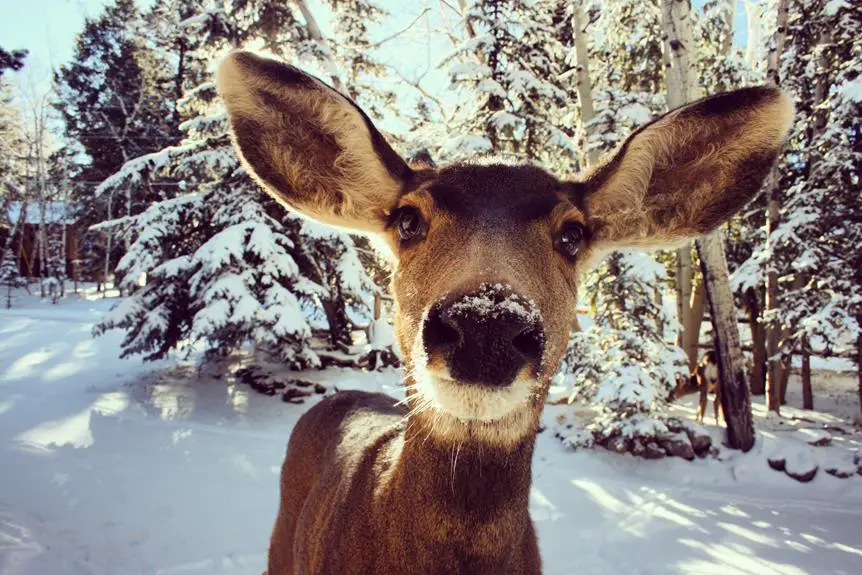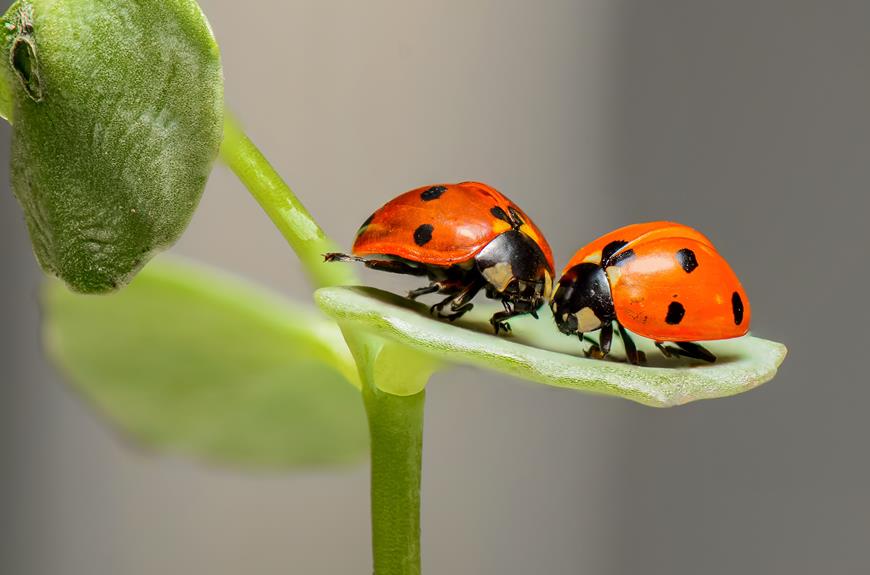There's a fascinating world of lizards waiting to be explored, from the agile Chameleon to the majestic Iguana.
In this article, we'll delve into the diverse and captivating types of lizards from A to Z. With over 6,000 species, these scaly creatures have adapted to various environments around the globe.
From the agile Gecko to the formidable Monitor, each lizard brings its unique characteristics and charm.
So, let's embark on this reptilian journey and discover the wonders of the lizard kingdom.
Key Takeaways
- Lizards from the Agamidae, Chameleon, Gecko, Iguana, and Monitor families are part of a diverse group of lizards with different physical characteristics and adaptations.
- Conservation efforts are important for protecting these lizards due to their ecological importance and threats they face.
- Chameleons have incredible color changing abilities and masterful camouflage, making them unique among lizards. They also have specific care requirements for keeping them as pets.
- Geckos have the ability to climb walls and ceilings and require the right habitat and a diet of small insects. Different species of geckos have different care requirements.
Agamidae
Agamidae, also known as agamas, are a diverse family of lizards that belong to the suborder Iguania. These lizards have been the subject of various conservation efforts due to their ecological importance and the threats they face in the wild. Agamidae play a crucial role in maintaining the balance of their ecosystems by controlling insect populations and acting as prey for larger predators.
Conservation efforts for Agamidae involve protecting their natural habitats, raising awareness about their importance, and implementing measures to reduce illegal trade and habitat destruction. These efforts aim to ensure the survival and well-being of these unique lizards for future generations.
Agamidae have also made their way into popular culture, appearing in books, movies, and even video games. Their distinctive appearance and behavior have captured the interest of many, making them a favorite subject for reptile enthusiasts and researchers alike. Some species of Agamidae, such as the bearded dragon, have become popular pets due to their docile nature and unique characteristics.
Chameleon
Chameleons, known for their ability to change color, are reptiles that belong to the family Chamaeleonidae. Here are four fascinating aspects of chameleons that will surely captivate your imagination:
- Incredible Color Changing Ability: Chameleons possess specialized skin cells called chromatophores that allow them to change their color. This remarkable ability helps them blend into their surroundings, communicate with other chameleons, regulate body temperature, and even display their mood.
- Masterful Camouflage: With their ability to change color, chameleons are masters of disguise. They can seamlessly adapt their skin color to match the environment, making them practically invisible to predators and potential prey.
- Unique Physical Features: Chameleons have distinct physical characteristics, such as independently moving eyes that provide them with a 360-degree field of vision. They also possess long, sticky tongues that they use to capture insects with lightning-fast precision.
- Chameleons as Pets: While chameleons can be captivating pets, they require specialized care. Their habitats need to mimic their natural environment, with ample foliage, proper lighting, and a regulated temperature and humidity. Additionally, they've specific dietary requirements, mainly consisting of insects. Proper research and commitment are essential before considering a chameleon as a pet.
Gecko
Geckos are known for their ability to climb walls and ceilings using specialized toe pads. These unique reptiles have captivated the interest of many lizard enthusiasts.
When it comes to gecko care tips, there are a few important things to consider. First and foremost, providing the right habitat is crucial. Geckos need a well-ventilated enclosure with appropriate temperature and humidity levels. The enclosure should also contain hiding spots and branches for them to climb on.
Another important aspect of gecko care is their diet. Geckos are insectivores, so their diet mainly consists of small insects such as crickets and mealworms. It's crucial to provide a varied diet to ensure they receive all the necessary nutrients.
Additionally, it's important to research specific gecko species and variations before bringing one home. Different gecko species have different care requirements, so it's essential to understand their specific needs.
Iguana
Iguanas are fascinating reptiles that require specific care and attention to thrive in captivity. Here are four unique adaptations of iguanas in their environment that set them apart from other lizards:
- Distinctive Body Structure: Iguanas have a long, slender body with strong, muscular limbs that enable them to climb trees effortlessly. Their sharp claws provide a firm grip, allowing them to navigate their arboreal habitat with ease.
- Colorful Skin: One of the most striking features of iguanas is their vibrant skin. They possess the ability to change color, which helps them regulate their body temperature and blend into their surroundings. This remarkable adaptation helps them avoid predators and remain hidden from potential threats.
- Herbivorous Diet: Unlike many other lizards, iguanas are primarily herbivores. Their specialized teeth and jaws are adapted to chew and process tough vegetation. This dietary preference allows them to consume a wide variety of plants, including leaves, flowers, and fruits.
- Excellent Swimmers: Iguanas are skilled swimmers and are often found near bodies of water. They have a long, muscular tail that acts as a rudder, aiding in their propulsion through the water. This adaptation allows them to escape from predators and explore new territories.
These unique adaptations make iguanas remarkable creatures that have successfully adapted to their environment over time. Understanding and providing for these specific needs is vital when caring for these captivating reptiles in captivity.
Monitor
Monitors are large lizards known for their impressive size and predatory nature. These reptiles belong to the family Varanidae and are widely distributed across the globe. Monitors are characterized by their elongated bodies, muscular tails, and sharp claws, which make them formidable hunters. They're known to have varied diets, feeding on a wide range of prey including insects, small mammals, birds, and even other reptiles.
When it comes to monitor breeding habits, these lizards typically lay eggs. The female monitors excavate a nest in the ground where they deposit their eggs. The number of eggs laid can vary depending on the species, with some monitors laying as few as five eggs, while others can lay up to thirty or more. After laying the eggs, the female monitors cover the nest and leave the eggs to incubate.
Once the eggs hatch, the young monitors are left to fend for themselves. They've to navigate the challenges of survival, including finding food and avoiding predators. It can take several years for young monitors to reach sexual maturity and become capable of reproducing.
Skink
Skinks are a diverse group of lizards known for their smooth, shiny scales and short legs.
They can be found in a variety of habitats, from deserts and forests to grasslands and rocky areas.
Some popular species of skinks include the blue-tongued skink, the five-lined skink, and the fire skink.
Skink Characteristics and Habitats
Skinks, known for their distinctive characteristics and varied habitats, are a fascinating group of lizards. Here are four key aspects that make skinks unique:
- Diverse Behavior Patterns: Skinks exhibit a wide range of behaviors, from burrowing underground to climbing trees. Some skinks are active during the day, while others are nocturnal. This versatility in behavior allows them to thrive in various environments.
- Conservation Efforts: Due to habitat loss and other factors, some skink species are facing threats. Conservation efforts are being made to protect these lizards and their habitats. Organizations work to raise awareness, establish protected areas, and promote sustainable practices to ensure the survival of skinks.
- Impressive Adaptations: Skinks have adapted to their habitats in remarkable ways. Some species have developed specialized scales that allow them to blend into their surroundings, providing camouflage and protection from predators. Others have evolved unique limb structures for efficient movement on land or in water.
- Ecological Importance: Skinks play a vital role in ecosystems as both predators and prey. They control insect populations, help disperse seeds, and contribute to nutrient cycling. Their presence is crucial for maintaining ecological balance and biodiversity.
Popular Skink Species
One popular skink species, commonly encountered in various habitats, is the Blue-Tongued Skink. This skink is known for its unique coloration and active behavior. The Blue-Tongued Skink is native to Australia and is highly sought after as a pet.
Its distinctive blue tongue, which it uses as a defense mechanism, is one of its most recognizable features. In captivity, this skink requires a spacious enclosure with proper temperature and humidity levels.
Skink conservation efforts are also being made to protect these reptiles in their natural habitats. It's important to promote awareness about the importance of preserving skink species and their ecosystems. By supporting these conservation initiatives, we can ensure the survival of these fascinating creatures for future generations to enjoy.
Frequently Asked Questions
How Do Lizards Reproduce?
Lizards reproduce through a process involving courtship behavior and egg incubation. They engage in complex courtship rituals to attract mates, and the female lays eggs which she buries or attaches to surfaces where they incubate until hatching.
What Are the Main Threats to Lizard Populations in the Wild?
Climate change and habitat loss are the main threats to lizard populations in the wild. These factors disrupt their natural habitats and can lead to reduced food availability, increased predation, and decreased reproductive success.
Can Lizards Change Their Color to Match Their Surroundings Like Chameleons?
Lizards have evolved various mechanisms to change their color to match their surroundings, much like chameleons. This ability helps them camouflage and avoid predators or ambush prey. The evolution of coloration in lizards is fascinating and serves important survival purposes.
Are Lizards Dangerous to Humans?
Lizards are generally not dangerous to humans. While some species may bite if threatened, their bites are usually harmless. However, it's important to note that improper handling or keeping certain species as pets can pose health risks.
What Are Some Common Predators of Lizards in Their Natural Habitats?
Predators of lizards in their natural habitats vary depending on the species. Common predators include birds, snakes, and mammals. Lizards have evolved camouflage adaptations to blend in with their surroundings and avoid being detected by these predators.








